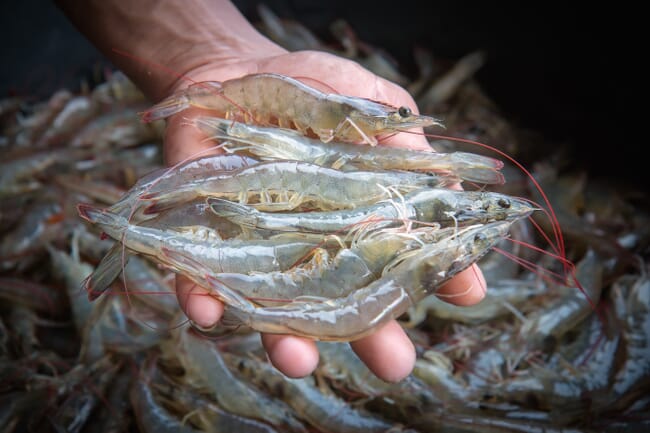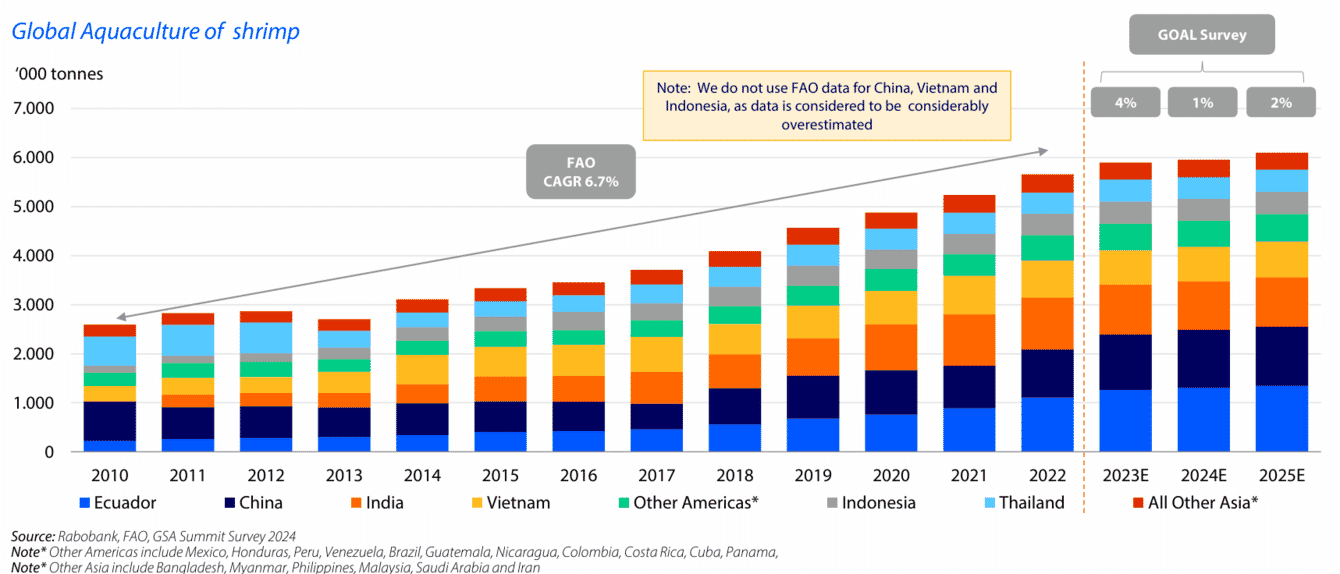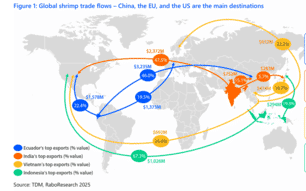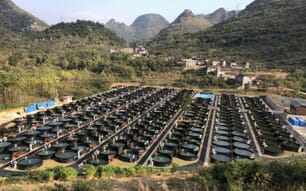
This was one of the main messages delivered by Rabobank's Gorjan Nikolik during a presentation at this year’s Global Seafood Alliance summit, which focused on shrimp production forecasts from around the globe based on responses from GSA’s annual survey.
“2024 has been the year when Ecuador slowed down after several years of double digit growth. Last year they grew by 14 percent, so were basically staying on trend. And then the brakes were put on in 2024 by China’s limited consumer demand. The survey respondents still predicted growth, but only by around 4 percent, and that’s probably on the high side, because the survey was made before the September export results came in at -11 percent, so the final number could be zero or 2 percent. That’s a very different pace of supply growth from what we've seen historically from Ecuador and is a really important moment,” Nikolik explained to The Fish Site.
Looking further ahead, he pointed out the pessimistic outlooks of the Ecuadorian survey respondents for 2025 too, which he attributes to the continued slump in Chinese demand.
“However, they also said this before China announced the 10 trillion Yuan stimulus package. We don't know yet how that will be deployed, but it is a phenomenal amount, around $1 trillion, which could affect the 2025 number, but let's see,” Nikolik noted.
Meanwhile Brazil – which unlike Ecuador has a strong domestic market for a large range of seafood – is going from strength to strength.
“It's doing well in tilapia, it's doing well in shrimp and they imported a lot of salmon too. So the Brazilian economy is good and we expect 10 percent growth in shrimp production. We always knew that Brazil has a lot of potential, so let's see how it will develop,” Nikolik observed.
The survey suggested mixed results for the other players in the Latin American shrimp sector – with slow growth in Mexico; while Venezuela, where up to 90 percent of the country’s shrimp is produced by Grupo Lamar, is doing well, especially in the Spanish and French markets.
“The others, in Peru, Honduras and Guatemala are really struggling with the low prices. I think shrimp is becoming a scale game and it's difficult for the smaller players to compete with low prices for this long,” Nikolik reflected.

The figures for 2023 to 2025 are estimates based on the results of the Global Seafood Alliance's latest survey
Asian exports
Asian shrimp producers also experienced a tough year. According to the survey respondents Indian shrimp production fell by 4 percent in 2023, will fall by 3 percent this year but will recover in 2025. However, Nikolik suspects that the 2024 figure needs to be adjusted.
“Based on the export figures I think that Indian export levels have actually been flat or slightly positive,” he noted.
Nikolik is wary of the official figures from Vietnam and Indonesia, which he suspects have been inflated by the authorities. If that is indeed the case then, as he pointed out the combined figures for Asian shrimp should be a slight downturn in both 2023 and 2024.
A slight shift to monodon
There have been predictions for a move back to monodon production in Asia for several years now, and – according to the survey – this is becoming increasingly evident: with growth of 3.2 percent in 2023, and expected increases of 9 percent in 2024 and 7 percent for 2025.
“It seems some people are switching to monodon as the new strains can be bred at higher densities and to bigger sizes, which can lead to better prices. But it's still a comparatively small industry – about 10 percent of the 6 million tonne total,” Nikolik noted.
Rosenbergii on the retreat
Meanwhile he points to Rosenbergii, which make up about 5 percent of the farmed shrimp sector and showed promising growth in the past, are likely to decline both this year and next.

The figures for 2023 to 2025 are estimates based on the results of the Global Seafood Alliance's latest survey © Rabobank
Looking at the aggregated results, in terms of species and geographies, it amounts to a fairly poor year, as expected.
“The overall picture is flat to negative for 2023 and 2024, with all three of the main markets – China, the US and Europe – weak at the same time,” reflected Nikolik.
However, he points to signs of a recovery in US demand.
“I’ve heard positive things in the last few months, especially from exporters to Europe and North America, who have seen some improvements in the prices and greater demand. retailers have finally reduced shrimp prices after keeping them high for long; inflation is a more under control and people are starting to buy more. So it looks hopeful, at least in the West and all those countries that are dependent on the West,” he reflected.
“On the other hand Chinese demand is much weaker than expected and this goes against the long-term trend because the Chinese were consuming five, six, seven percent more shrimp per year,” he added.
As a result, Nikolik predicts that Ecuadorian shrimp exporters – who traditionally focused on China – will increasingly look towards the EU as well as the US market, buoyed by the Americans’ recent decision to revoke the countervailing duties (CVDs) that they were planning to impose on Ecuador’s biggest shrimp player, Santa Priscila.
As Nikolik points out, this will be yet another blow to the likes of India and Indonesia who not only have higher costs of production but are also being hit by CVDs.







